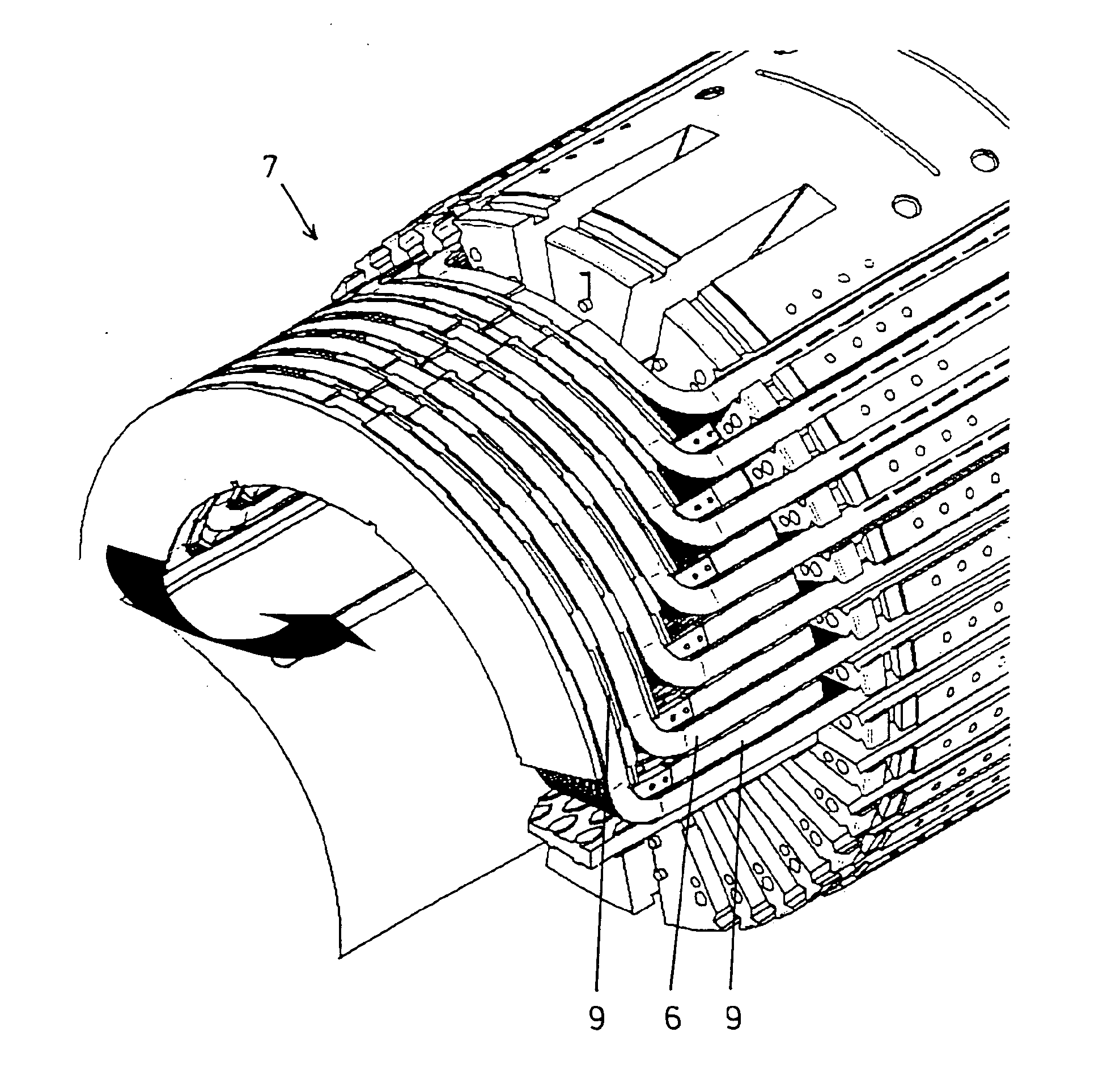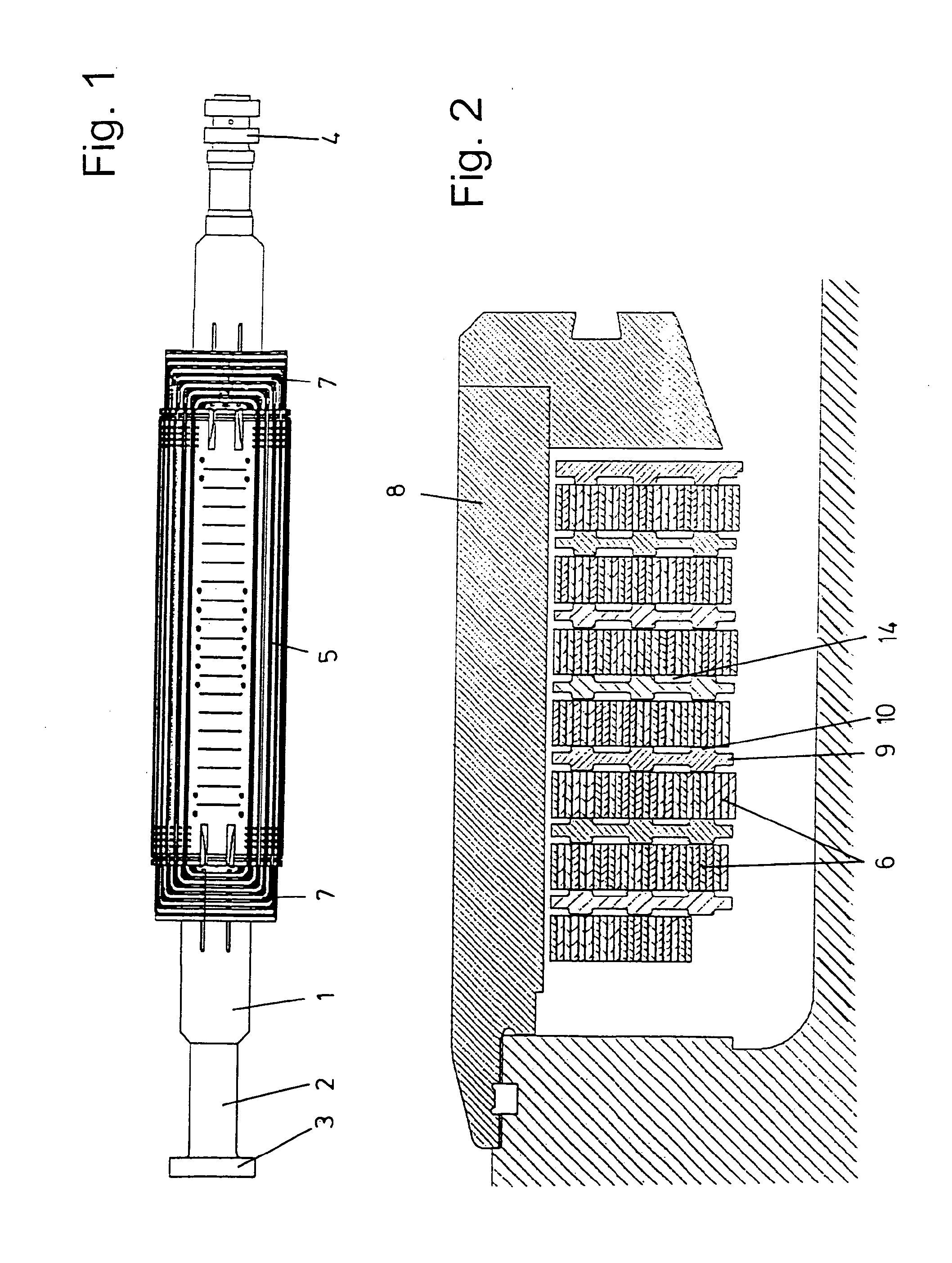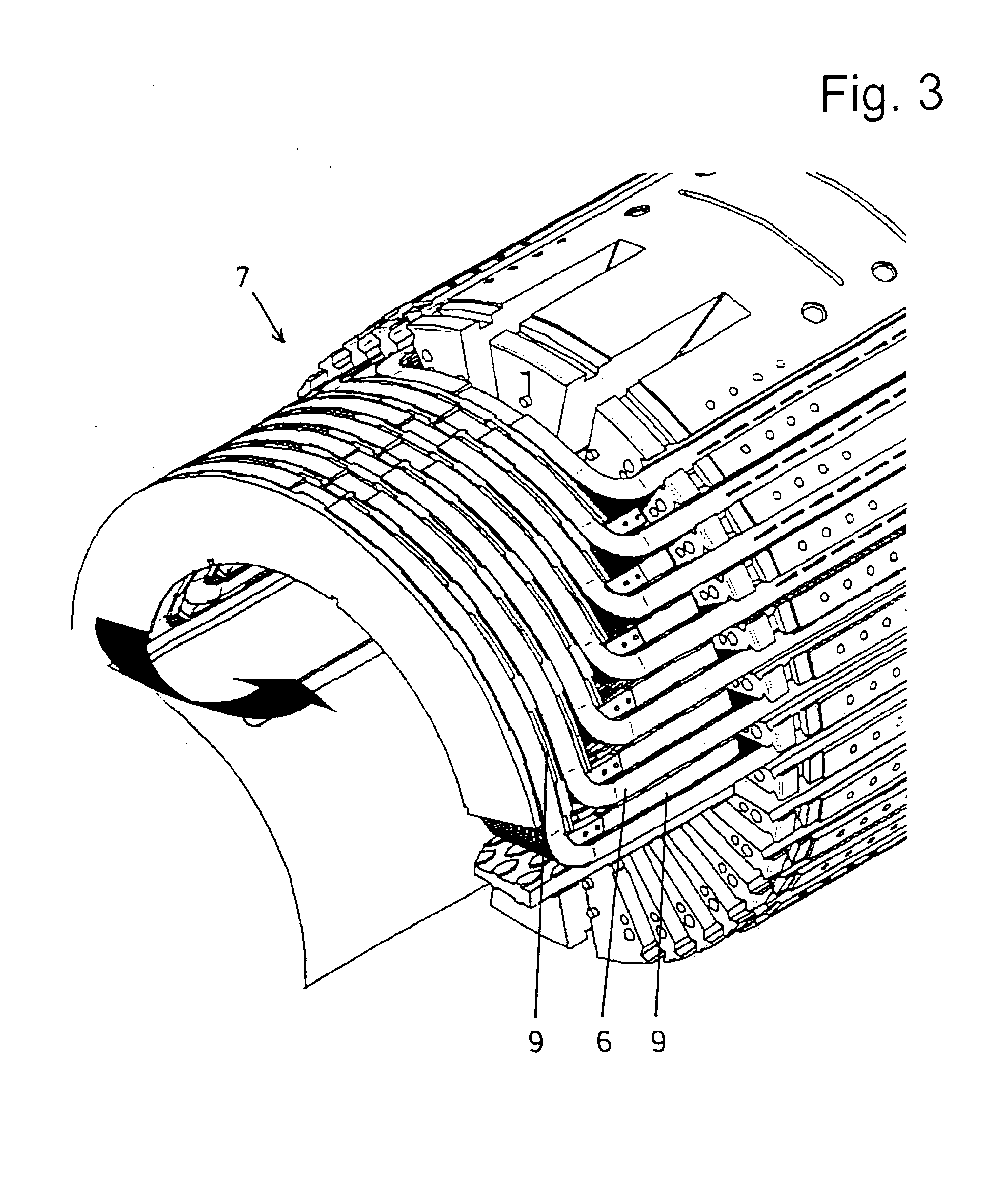Rotor of an Electric Generator for Generating Electricity in Power Plants
- Summary
- Abstract
- Description
- Claims
- Application Information
AI Technical Summary
Benefits of technology
Problems solved by technology
Method used
Image
Examples
Embodiment Construction
[0039]FIG. 1 shows the rotor of a 2-pole generator as a whole. In this context, the rotor has a shaft 1. The latter has at one end a bearing 2 as well as a coupling 3 for the turbine and at the other end slide rings 4. In the central area there is the rotor body with the rotor winding 5 comprised of individual conductors 6. The two ends of the rotor winding 5 form the winding overhangs 7. It can be seen additionally in FIG. 2 that the winding overhangs 7 are covered by a rotor cover 8.
[0040]As can be seen in detail in FIGS. 3 to 5, the conductors 6 are arranged in the area of the winding overhang 7 initially straight and coaxial to the axis of the shaft 1, subsequently circular arc-shaped and concentric, and finally straight and coaxial again. In the straight area as well as in the circular arc-shaped area of the conductors 6 there are between them—in the most general sense—plate-shaped flat support elements 9 of fiberglass-reinforced plastic material or another insulating material....
PUM
 Login to View More
Login to View More Abstract
Description
Claims
Application Information
 Login to View More
Login to View More - R&D
- Intellectual Property
- Life Sciences
- Materials
- Tech Scout
- Unparalleled Data Quality
- Higher Quality Content
- 60% Fewer Hallucinations
Browse by: Latest US Patents, China's latest patents, Technical Efficacy Thesaurus, Application Domain, Technology Topic, Popular Technical Reports.
© 2025 PatSnap. All rights reserved.Legal|Privacy policy|Modern Slavery Act Transparency Statement|Sitemap|About US| Contact US: help@patsnap.com



